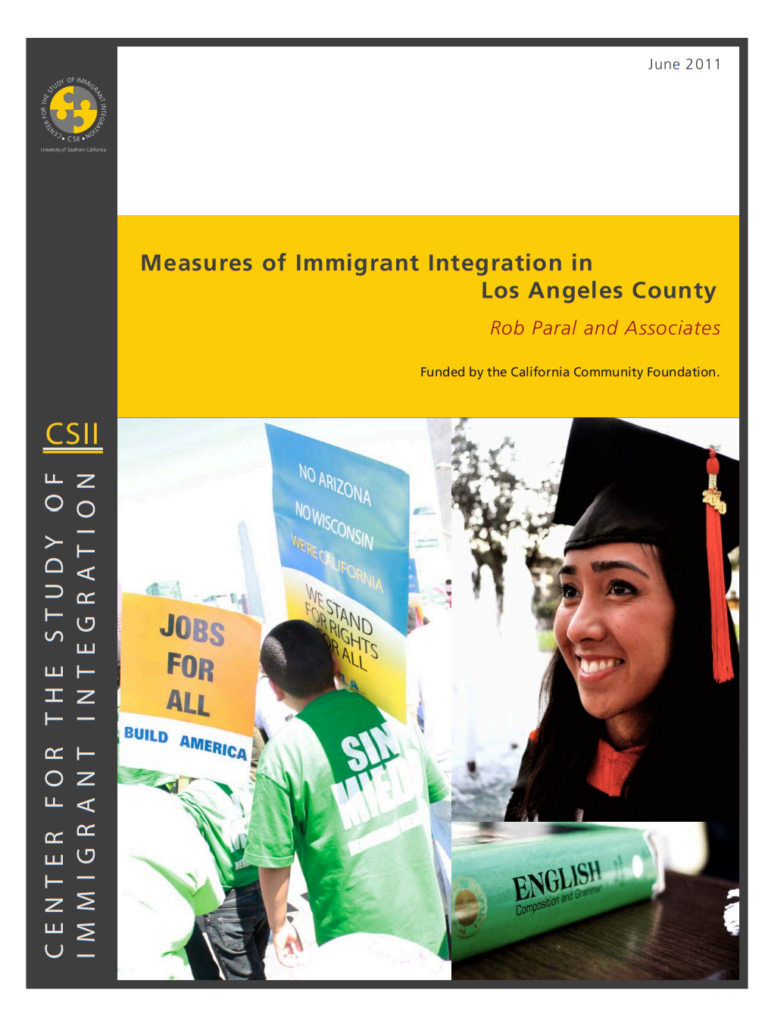
June 2011
By Rob Paral and Associates
Please note: reports dated earlier than June 2020 were published under our previous names: the USC Program for Environmental and Regional Equity (PERE) or the USC Center for the Study of Immigrant Integration (CSII).
Los Angeles County is home to an immigrant population of nearly 3.5 million, and how well those immigrants are integrated into society will have a major effect on the region’s future. This report examined the social and economic progress of major immigrant groups in the region and contributed to the literature by comparing across sending countries.
Rob Paral tracked the progress of Los Angeles immigrants who entered the U.S. during the 1980s and were between 25 and 34 years of age as of the 1990 census. Their situation was measured in 1990, 2000 and 2006–2008 and compared to a benchmark group, native-born whites. The analysis examined whether socioeconomic gaps between the immigrant groups and the native-born whites appeared to narrow or widen over time. The featured groups represented the county’s largest foreign-born populations: Mexico, El Salvador, Philippines, Guatemala, Korea, Vietnam, China and Taiwan. In general, immigrants seemed to be integrating, but at very distinct rates by country of origin.



